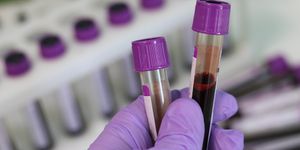Smart Pacifier Tracks Electrolytes in Premature Infants
Researchers at Washington State University have developed a pacifier that can regularly monitor hydration levels of a premature infant by analyzing electrolytes in saliva. The design and use of this smart device is described in a recent article published in Biosensors and Bioelectronics.
The World Health Organization estimates that about 15 million babies are born premature every year (that is, born before 37 weeks). That number is expected to continue rising. Unfortunately, complications caused by a premature birth are among the leading causes of death in children under five years of age. For children that do survive premature birth, the risk of disability and other problems is far more likely. Because of these risks, premature infants often require a lot of care to avoid significant complications.
Among the various challenges a premature baby faces is the risk of dehydration. Doctors can monitor a premature baby’s electrolyte levels to keep an eye on hydration levels and determine whether intervention is needed. However, keeping track of electrolyte levels in a premature infant is a big challenge. Regular blood draws are needed, which can be time consuming and very invasive for these tiny humans. And, blood draws only provide a handful of snapshots throughout the day, leaving doctors in the dark about how electrolytes fluctuate between blood draws. Because premature infants are already hooked up to various machines and wires, reducing the burden of blood draws can be incredibly beneficial.
The pacifier collects samples of saliva from a baby, measures sodium and potassium levels, and communicates this information to a health care provider who can assess and respond in real time.
Measuring electrolytes in saliva isn’t exactly a new process. However, many existing methods require taking a saliva sample and testing it externally, similar to a blood sample. The pacifer’s ability to monitor electrolyte levels in real time offers a new approach to electrolyte measurement and management.
Initial testing of the pacifier shows that the measurements it provides are equivalent to electrolyte levels measured by blood tests.
Sources: Medgadget; Biosensors and Bioelectronics; WHO





![Master Lab Weighing: Accuracy, Compliance & Audits [eBook]](https://d3bkbkx82g74b8.cloudfront.net/eyJidWNrZXQiOiJsYWJyb290cy1pbWFnZXMiLCJrZXkiOiJjb250ZW50X2FydGljbGVfcHJvZmlsZV9pbWFnZV85MWRmZmRjMDIwNDBlMWJjMzYwN2ZiYWY2ZjI4ZGMzYzBmZGMwZGMyXzkxOTcucG5nIiwiZWRpdHMiOnsidG9Gb3JtYXQiOiJqcGciLCJyZXNpemUiOnsid2lkdGgiOjcwMCwiaGVpZ2h0IjozNTAsImZpdCI6ImNvdmVyIiwicG9zaXRpb24iOiJjZW50ZXIiLCJiYWNrZ3JvdW5kIjoiI2ZmZiJ9LCJmbGF0dGVuIjp7ImJhY2tncm91bmQiOiIjZmZmIn19fQ==)


